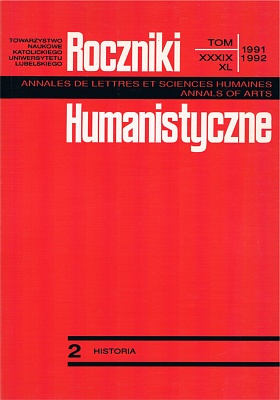Ubiory szlachty powiatu lubelskiego w drugiej połowie XVII i w XVIII wieku w świetle inwentarzy pośmiertnych z lat 1663-1778
Abstrakt
The paper is devoted to the nobleman’s garments worn in the Lublin district in the years 1663-1778 on the basis of an analysis of postmortem invoices. 287 male invoices and 50 female invoices from the period have been preserved. As far as clothes are concerned two influences, eastern and western, have collided in Poland. From the 15th century on people turned to the East for male fashion. It was typical of the Polish garments to contain a long joupane which played the role of a bottom robe, appearing in 91 per cent on the invoice under analysis. They were made mainly of such materials as: satin, silk and in colours: blue, red, rarely green, white, and black. On the joupane were put long robes with characteristic cut sleeves, the so-called reverses. The latter reached below the knee and were characterized by Polish fashion. They are mentioned in 96,2 per cent of invoices. They were most often made of materials in colours: red, black, green and blue. As to the varieties of the colours red and blue, they were reserved only for the nobility. Crimson signified a red nobleman’s robe. Very often the nobleman himself was called a crimson. The value of those garments was enhanced by gold or silver buttons, often embroidered with precious stones. The joupanes and long robes were bound with silk belts. Such a garment was of the Turkish origin. In the nobleman’s mind, however, it was a Polish garment, which corresponded to the ideology of old-Polish character.
In the female garment, on the other hand, one notices a greater influence of the western patterns. From the mid-17th century and throughout the entire 18th century the garments made after the French fashion were favoured by Polish women. There were sacques, mantas, and joujmantas. As for outer garments there were traditional long robes and woman’s tunics, made after man’s fashion, lined with precious furs. In thefinishing details of robes and hats there dominated western, especially French, fashion.
Copyright (c) 1992 Roczniki Humanistyczne

Utwór dostępny jest na licencji Creative Commons Uznanie autorstwa – Użycie niekomercyjne – Bez utworów zależnych 4.0 Międzynarodowe.





